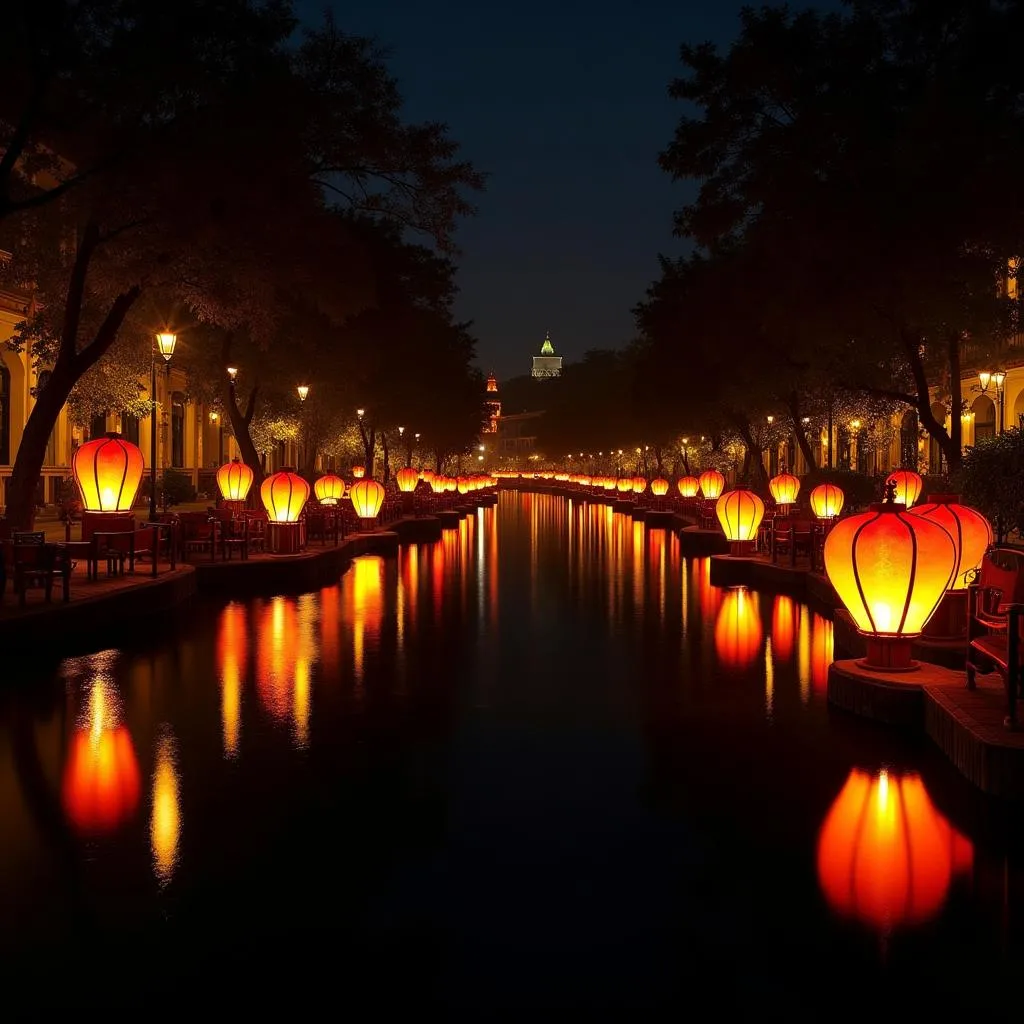Have you ever felt the urge to just pack a bag and go? To escape the routine, explore the unknown, and experience something new? This innate desire to travel, to break free from the familiar, is a universal human experience. But what drives it? What motivates someone from the bustling streets of Hanoi to seek solace in the Himalayas, while another from the quiet English countryside dreams of the vibrant chaos of Rio de Janeiro? The answer lies in the intricate interplay of travel push and pull factors.
These factors, influenced by our culture, personal experiences, and aspirations, act as invisible forces shaping our travel decisions. Let’s delve deeper into this fascinating world of travel motivations, comparing and contrasting these factors across different cultures.
Unpacking the Travel Bug: Push vs. Pull Factors
Imagine yourself standing at a crossroads, a metaphorical representation of your life. One path represents staying put, comfortable yet predictable. The other path, shrouded in mist and promising adventure, beckons you to explore. The forces pushing you away from the familiar path are the push factors, while those enticing you towards the unknown are the pull factors.
Push Factors: Escaping the Everyday
Push factors are often rooted in dissatisfaction with one’s current environment or circumstances. These could be:
- Socio-economic factors: Lack of job opportunities, political instability, or economic hardship can push individuals to seek a better life elsewhere. For instance, the economic boom in Dubai attracted a significant influx of workers from South Asia seeking better opportunities.
- Cultural or political climate: Social restrictions, discrimination, or a desire for greater freedom and personal expression can motivate individuals to migrate to more liberal societies. The wave of migration to Canada following stricter immigration policies in the US is a case in point.
- Personal factors: Desire for a change of scenery, escape from routine, or seeking adventure and personal growth can also act as strong push factors.
Pull Factors: The Allure of the Unknown
Pull factors, on the other hand, are the positive attributes of a destination that attract visitors. They appeal to our desires, aspirations, and fantasies. These can include:
- Natural beauty: Breathtaking landscapes, pristine beaches, and opportunities for outdoor adventures are powerful pull factors. The allure of the Swiss Alps or the Maldives needs no further explanation.
- Cultural attractions: Historic sites, vibrant arts and music scenes, unique customs and traditions, and even culinary experiences can be strong pull factors. The ancient ruins of Machu Picchu or the vibrant festivals of Thailand draw millions of visitors annually.
- Lifestyle factors: A slower pace of life, a different climate, or a more relaxed social environment can be attractive to those seeking a change from their own lifestyle. The laid-back Mediterranean lifestyle is a major draw for many Europeans.
 Diverse group of travelers with backpacks exploring a new city
Diverse group of travelers with backpacks exploring a new city
Cross-Cultural Perspectives: Travel Motivations Around the Globe
While the push and pull factors mentioned above hold true across cultures, the specific motivations and priorities can differ significantly.
- Western Cultures: Driven by individualism and self-discovery, travelers from Western cultures often prioritize personal growth, adventure, and experiencing different cultures. They might be drawn to backpacking through Southeast Asia, volunteering in South America, or exploring historical sites in Europe.
- Eastern Cultures: Travelers from Eastern cultures, influenced by collectivist values, often prioritize family bonding, spiritual growth, and connecting with their heritage. Pilgrimages to sacred sites like Varanasi in India, family trips to historical landmarks in China, or nature retreats in Japan are common examples.
Professor Lee Wei Min, author of “Cultural Influences on Travel Behavior,” notes, “Understanding these cultural nuances is crucial for tourism stakeholders to tailor their offerings and marketing strategies to effectively target different traveler segments.”
 Tranquil scene of Hoi An ancient town with colorful lanterns at night
Tranquil scene of Hoi An ancient town with colorful lanterns at night
From Push to Pull: My Journey to Hoi An
My own travel story is a testament to the interplay of push and pull factors. Feeling burnt out from the relentless pace of city life, I felt a strong push to escape the concrete jungle. Vietnam, with its stunning natural beauty, rich culture, and promise of adventure, exerted a powerful pull.
Landing in Hanoi, the energy of the city was exhilarating. But it was the charming town of Hoi An that truly captivated me. The ancient architecture, the colorful lanterns, the delicious street food, and the warmth of the locals created a sense of peace and belonging I didn’t know I craved. It was a journey fueled by a push for change and pulled by the allure of a different way of life.
Planning Your Next Adventure: Tips from TravelCar
Ready to embark on your own journey of discovery? Here are a few tips from the experts at TRAVELCAR.edu.vn to help you plan your next adventure:
- Identify your push and pull factors: What’s driving your desire to travel? What are you hoping to find? Understanding your motivations will help you choose the right destination and create a more fulfilling travel experience.
- Consider your travel style: Are you an adventurous backpacker or a luxury traveler? Do you prefer exploring bustling cities or relaxing on pristine beaches? Knowing your travel style will guide your choices in accommodation, activities, and overall itinerary.
- Research your destination: Dive deep into the culture, customs, and practicalities of your chosen destination. This will not only enrich your experience but also help you avoid potential pitfalls and ensure a smoother trip.
